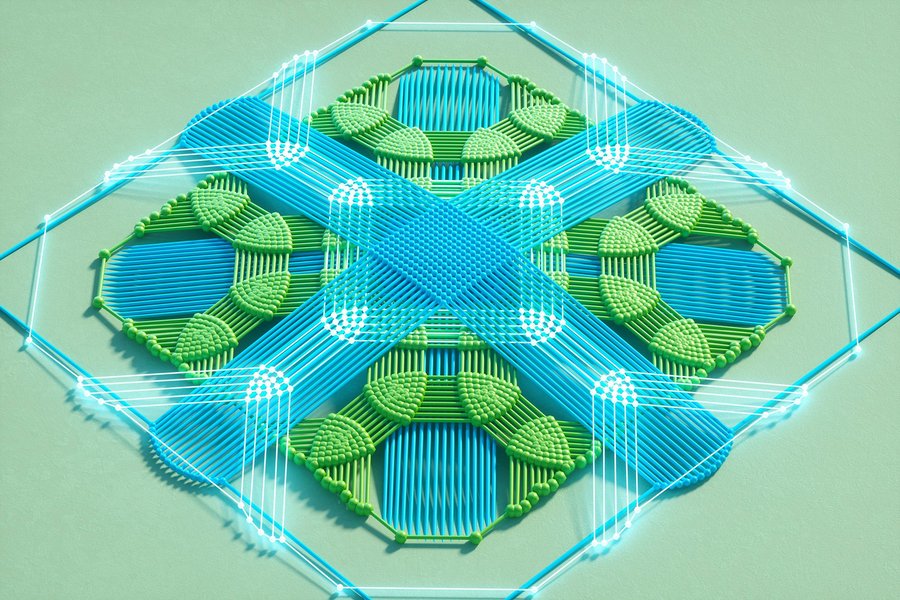Published: 06/06/2024

NotaTray® Ecosystem in Hungarian cash cycle
NotaTray® Ecosystem in Hungarian cash cycle Magyar Nemzeti Bank (MNB), Hungary’s central bank, wanted a leaner, more secure, and sustainable cash processing cycle. The solution was to implement NotaTray® as an efficient, resilient, secure, and sustainable approach to automated banknote processing.
The global environmental challenge is not going away. While national governments and corporations have been quick to set ambitious net zero goals in recent years, actionable steps to achieve these goals have not always been as forthcoming.1 Companies and organizations across all sectors have an obligation to increase their sustainability efforts, but doing so does not have to come at the expense of other business objectives. In fact, improving sustainability can actually improve operational efficiency, and also security.
In recent years, stakeholders in the currency industry have taken steps to make the cash cycle more sustainable through a number of innovative measures, such as introducing “greener banknotes” made from more environmentally friendly materials, or reducing waste and reliance on single-use packaging, and improving the efficiency of cash centers through greener products and automation.
In an increasingly digital world, the very existence of physical cash may seem a contradiction. After all, with a range of digital payment options now available, it’s tempting to question whether we still need it. Such suggestions are premature. Cash is a trusted, inclusive, risk-resilient, and popular form of payment, and it’s not going away anytime soon.
So, the question for cash cycle stakeholders is not, “How do we move on from cash?” but rather, “How do we make cash as sustainable, secure, resilient, and efficient as possible?”

For the Magyar Nemzeti Bank (MNB), Hungary’s central bank, and its commercial partners like Criterion, the solution was to implement a lean and green collaborative model, called the NotaTray® Ecosystem. This not only reduced the carbon footprint of the Hungarian cash cycle, but also improved cash center security and contributed to significant efficiency gains across operations. Here’s a closer look at how they did it:
What a central bank needs
The MNB has been using high-speed processing machines from G+D since the 1980s. Until recently, boxes or containers were packed with banknotes, including additional single-use packaging material, which were then manually unpacked by employees. With up to 270,000 bundles processed each year by MNB – half of which are unfit banknotes – this method was not only time-consuming and inefficient, but it also posed security concerns, not to mention the substantial waste generated daily.
In response to these challenges, in 2022 the central bank decided to integrate G+D’s NotaTray® Ecosystem with a standardized “simple box” for the transport, storage, and processing of unfit banknotes into its existing automation process. NotaTrays are reusable containers for automatically loading loose banknotes into – and out of – cash processing machines, without the need for banderole paper or plastic wrapping. They can also be used in logistics. From an environmental perspective alone, the impact cannot be ignored.
“The NotaTray® Ecosystem helps us reach our sustainability goals,” says Péter Klein, Head of Control and Technology Support at MNB. By replacing single-use packaging with NotaTray® containers, the central bank can save quantities of paper straps and plastic film across the entire cash supply chain each year.
In addition to reducing waste, NotaTray® also increases security. “NotaTray® enhances security by reducing our operational risk,” says Dr. Anikó Bódi-Schubert, Head of the Cash Issuance Strategic Department at MNB. “When a shipment arrives in NotaTray® boxes, it is closed and sealed so that it can be stored directly in the vault. It can then be processed without any human interaction or manual handling by our employees.”
One of NotaTray®’s greatest strengths is how it increases efficiency not only within the central bank, but throughout the entire cash cycle. Of course, in order to reap those benefits, it was essential for MNB to gain the support of wider cash cycle stakeholders, such as commercial banks and cash-in-transit providers. Facilitating such a change is a challenge in itself and one that requires patience and collaboration.
Collaboration across the cash cycle
“It’s quite natural that when an innovation comes on the market, it’s strange at first,” says Bódi-Schubert. “New ideas require a new way of thinking, a new way of working.” To ease the transition away from bundled banknotes, the MNB provided its partners with free NotaTrays and as much support as they needed. “We have a close relationship with our partners,” says Klein. “We communicate almost daily to find common ground on how to reduce costs while increasing security and sustainability.”
“It’s quite natural that when an innovation comes on the market, it’s strange at first. New ideas require a new way of thinking, a new way of working.“
Head of the Cash Issuance Strategic Department, MNB
One such partner is Criterion, Hungary’s largest cash-in-transit provider, which faced a challenge. “We process a huge amount of money – about 18 trillion Hungarian forints,” says Robert Juhos, CEO of Criterion Holding. “In 2022 alone, cash levels rose by 32%. How can we respond to this level of growth, while maintaining the same level of efficiency, security, and sustainability?”
The MNB made it mandatory by law to implement NotaTrays for the shipment of unfit banknotes. Adopting the NotaTray® Ecosystem helped Criterion hit all its marks in that context, as have the other participants in the cash cycle in Hungary.
More efficient and sustainable
This is just the beginning. Having successfully implemented NotaTrays and developed best practices for processing unfit banknotes, the next phase is to fully adapt the ecosystem to fit banknotes as well. Indeed, proof of concepts are already under way.
This is an important next step on Hungary’s journey toward a more standardized cash cycle and one that demonstrates a wider commitment to making the cash supply chain as efficient, secure, and sustainable as possible.
Key takeaways
- Magyar Nemzeti Bank (MNB) and its commercial partners, such as Criterion, integrated NotaTray® for processing unfit banknotes in 2022.
- The NotaTray® Ecosystem reduces waste, strengthens cash center resilience, and increases efficiency and security across the cash cycle.
- Further integration of NotaTray®, driven by the MNB, will help reduce the carbon footprint of the Hungarian cash cycle.
-
Net Zero Stocktake 2023, Net Zero Tracker, 2023
Share this article
Subscribe to our newsletter
Don’t miss out on the latest articles in G+D SPOTLIGHT: by subscribing to our newsletter, you’ll be kept up to date on latest trends, ideas, and technical innovations – straight to your inbox every month.







